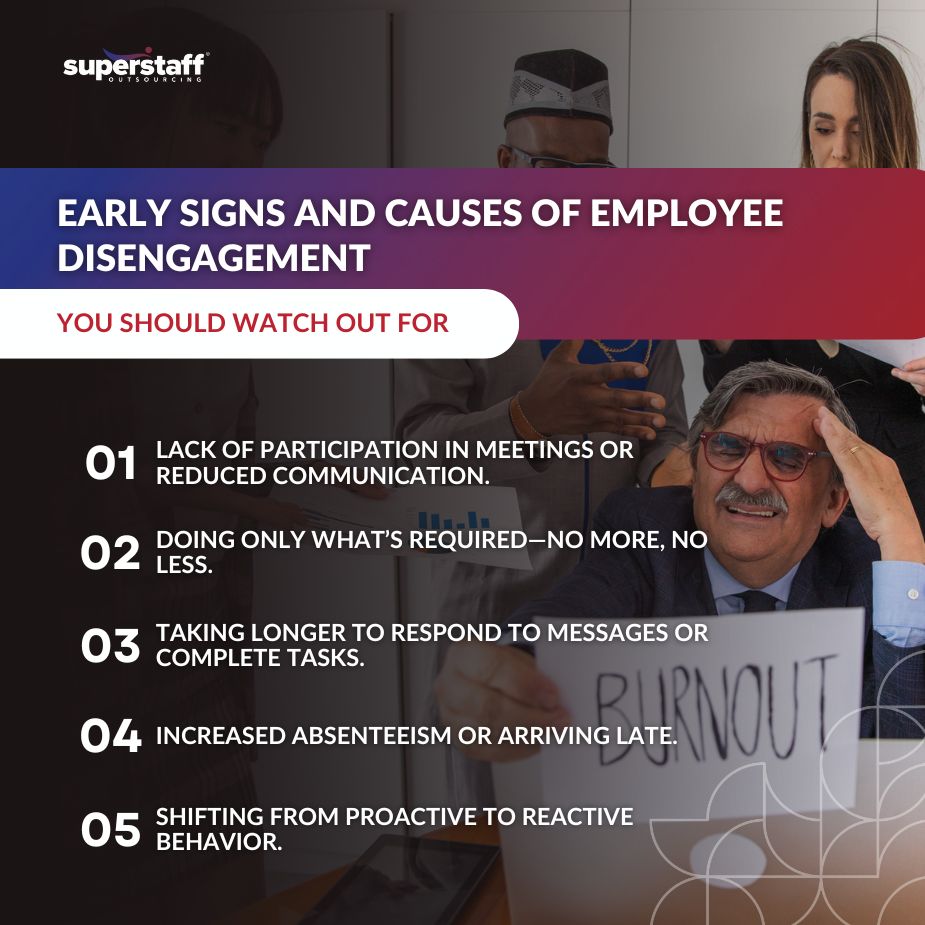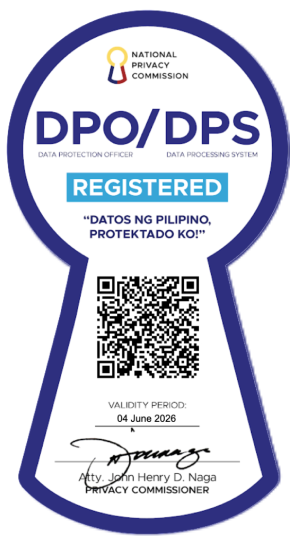
“Quiet quitting.” Disengaged clock-punching. Employees who show up but mentally check out. These silent red flags are becoming more common in today’s workforce—and they’re costing companies more than they realize. From low productivity and lackluster performance to high turnover, the impact of disengagement often goes unnoticed until it’s too late. That’s why it’s critical for leaders to understand the root causes of employee disengagement—whether it stems from burnout, boredom, or lack of purpose—before these issues spiral into bigger organizational problems.
While burnout is frequently blamed, it’s not the only culprit. In many cases, employees aren’t exhausted—they’re simply uninspired. Repetitive tasks, lack of challenge, and unclear growth paths can all trigger disengagement. In short, boredom can be just as damaging as burnout.
Understanding the real causes of employee disengagement—and spotting them early—is essential for keeping your top talent motivated and productive. In this blog, we’ll explore the subtle signals of disengagement, how to distinguish boredom from burnout, and what you can do to reignite purpose and enthusiasm in your team before disengagement turns into departure.
Disengagement Doesn’t Always Look Like Burnout
Burnout gets all the headlines, but boredom might be the real reason your best employees are pulling back.
While burnout stems from prolonged stress and emotional fatigue, boredom-driven disengagement arises when employees feel underutilized, unchallenged, or stuck in repetitive routines. It’s not always loud or obvious. Sometimes, it looks like a once-excited employee gradually doing less or contributing without passion.
Key Differences:
- Burnout: Caused by overwhelming workloads, emotional exhaustion, and a lack of recovery time.
- Boredom: Triggered by monotonous tasks, lack of growth, and feeling disconnected from purpose.
Despite their differences, both lead to the same outcome: emotional detachment, reduced productivity, and eventually, voluntary or involuntary exit.
Recognizing the causes of employee disengagement—whether rooted in stress or stagnation—allows leaders to apply the right solutions from the outset. To address disengagement effectively, leaders must first learn to spot its early signs.
Subtle Signs Your Employees Are Disengaging
Not all disengagement is loud. In fact, some of the most overlooked causes of employee disengagement show up as subtle behavioral shifts.
Engaged employees bring energy, curiosity, and initiative to their roles. When these traits fade, it can signal a deeper issue. But unlike overt dissatisfaction, disengagement tends to be subtle and behavioral.
Early signs of employee disengagement you might miss include:
- Lack of participation in meetings or reduced communication.
- Doing only what’s required—no more, no less.
- Taking longer to respond to messages or complete tasks.
- Increased absenteeism or arriving late.
- Shifting from proactive to reactive behavior.
Individually, these signs might seem harmless. But collectively, they paint a picture of someone who has mentally checked out.
Once you spot these signs, the next step is identifying the root cause: Are they overwhelmed—or just uninspired?
Burnout vs. Boredom: Why the Distinction Matters
Reacting to disengagement without understanding its source can backfire.
If you assume burnout when the problem is boredom, you might offer rest when the employee craves challenge. If you push for performance when burnout is the issue, you risk driving them out the door.
Understanding the difference is key to resolution:
- Burnout requires reducing stressors, redistributing workload, and offering emotional support.
- Boredom requires introducing new challenges, promoting skill development, and offering meaningful goals.
- Misaligned fixes can worsen the problem. For example, giving PTO to a bored employee may feel like a reward for disengagement, not a motivator.
That’s why understanding the specific causes of employee disengagement is more important than ever—mistargeted efforts can demoralize rather than motivate. Whether burnout or boredom, both reveal a deeper problem: misaligned workloads and poor task fit.

The High Cost of Disengaged Employees
Whether due to burnout or boredom, the causes of employee disengagement impact everything from performance to profitability. Disengagement doesn’t just hurt morale—it drains the bottom line.
Companies often underestimate how damaging silent disengagement can be. According to Gallup, actively disengaged employees cost the global economy over $8.8 trillion annually in lost productivity.
Consequences include:
- Diminished innovation and collaboration.
- Higher turnover and increased recruitment/training expenses.
- Eroded team morale and trust.
- Elevated risk of errors, especially in customer-facing or high-volume roles.
These costs make early intervention essential.
To reverse disengagement, companies must rethink how work is distributed—and where outsourcing can help.
How Strategic Outsourcing Revitalizes In-House Engagement
Outsourcing isn’t just a cost strategy—it’s a people strategy. Done right, it serves as a powerful lever for boosting morale, reigniting purpose, and preventing burnout. This is why it’s crucial to understand the causes of employee disengagement and address them early.
When internal teams are overwhelmed with repetitive or time-consuming administrative tasks, their capacity for meaningful, strategic work diminishes. They spend their days checking boxes rather than driving innovation.
Over time, this breeds frustration, mental fatigue, and disinterest. Strategic outsourcing changes the equation. By redistributing workload, companies give employees back the headspace to focus on work that energizes rather than depletes.
Key benefits include:
- Delegating high-volume tasks like data entry, scheduling, or tier-one support to outsourcing partners: These routine but essential tasks often clog up internal workflows. By outsourcing them, organizations can maintain service quality without stretching in-house talent too thin. For example, a customer service team burdened with repetitive inquiries can redirect those basic tickets to an offshore call center—freeing internal agents to focus on complex, high-touch interactions that improve customer experience while avoiding one of the common causes of employee disengagement: repetitive, low-impact work.
- Allowing in-house teams to focus on high-impact, purpose-driven projects: Once routine work is removed from their plates, internal employees can reallocate their time and energy toward innovation, strategy, and problem-solving. This leads to higher job satisfaction and a renewed sense of purpose. Whether it’s launching a new campaign, reengineering a workflow, or mentoring junior staff, employees feel more fulfilled when they’re contributing to growth—and less likely to be affected by the causes of employee disengagement that stem from feeling undervalued or underutilized.
- Preventing employee burnout during seasonal spikes or major campaigns: During high-demand periods—like holiday seasons, product launches, or year-end reporting—internal teams often face unsustainable workloads. Outsourcing provides immediate, flexible support to manage these surges without sacrificing quality or overburdening staff. This proactive capacity planning helps sustain productivity while protecting employees from exhaustion.
- Demonstrating value by investing in upskilling and long-term development: When businesses invest in outsourcing to handle routine functions, they also create the space to invest in their people. Freed from low-value tasks, employees can participate in training programs, pursue certifications, or engage in cross-functional projects that build their skillsets. This positions the company as one that values career growth, which is a major driver of retention.
By addressing the root causes of employee disengagement, outsourcing frees teams to operate at their full potential. A well-executed outsourcing strategy doesn’t just optimize operations—it strengthens the employee experience. It reduces friction, enables focus, and helps team members reconnect with the meaning behind their work.
But outsourcing is only effective when implemented with employee well-being in mind. Without transparency and alignment, it can spark fear, miscommunication, or resistance. That’s why it’s essential to lead with empathy, involve your team in the transition, and select outsourcing partners who complement—not compete with—your culture and mission.
Best Practices for Using Outsourcing to Reignite Engagement
Outsourcing should be framed as support, not subtraction.
When done right, outsourcing empowers teams to thrive. When done wrong, it fosters fear and resentment. Communication, transparency, and employee involvement are essential.
Best practices include:
- Involving employees in identifying tasks they find repetitive, draining, or misaligned with their strengths.
- Framing outsourcing as a support mechanism to help them focus on what matters most.
- Choosing partners who reflect your company culture, values, and communication style.
- Monitoring KPIs tied to engagement, satisfaction, and performance before and after outsourcing.
This approach aligns with modern digital employee experience management strategies—centering employee needs while optimizing workflows.
With the right approach, outsourcing becomes a tool for retention—not just cost-saving.
Understanding the Causes of Employee Disengagement Is Only the First Step – Now Is the Time for Action
Disengagement—whether from burnout or boredom—can silently drain performance. But it’s not irreversible.
By learning to recognize the early signs, understanding the true causes of employee disengagement, and implementing thoughtful solutions like strategic outsourcing, businesses can revitalize morale, reduce turnover, and strengthen their workforce.
Explore how SuperStaff’s outsourcing solutions can free your team from burnout and boredom. Let’s build a more engaged, productive future—together.






